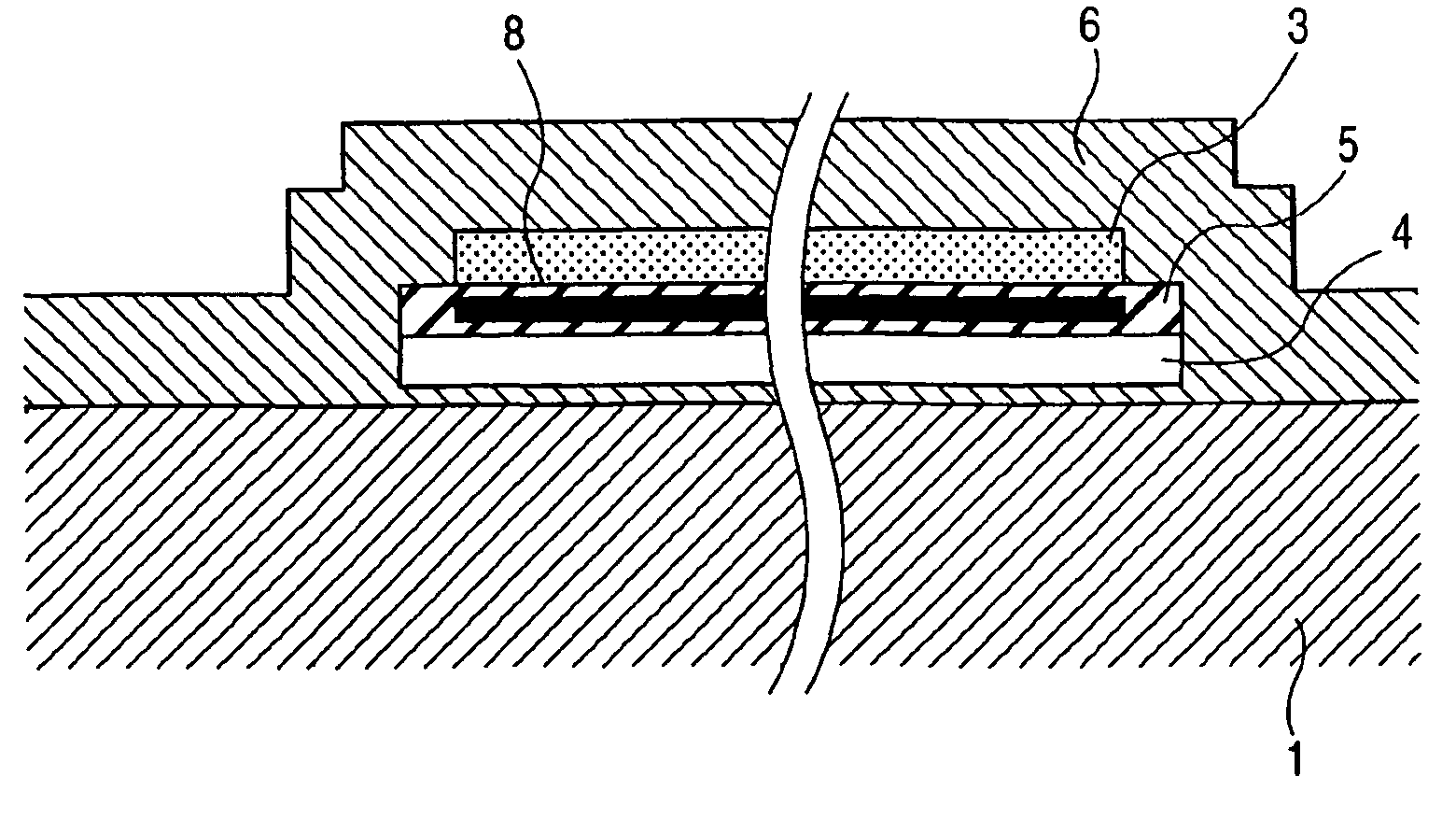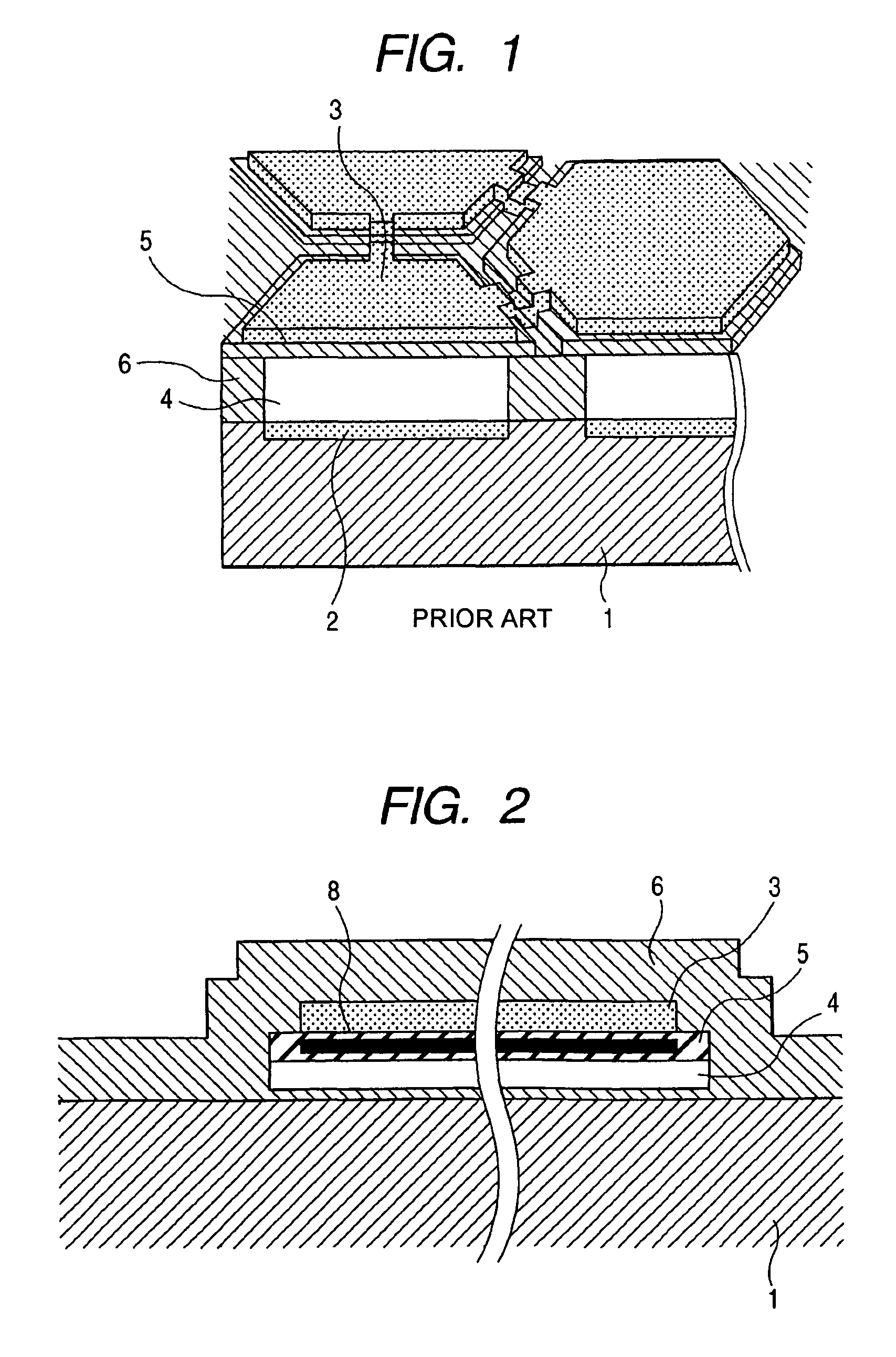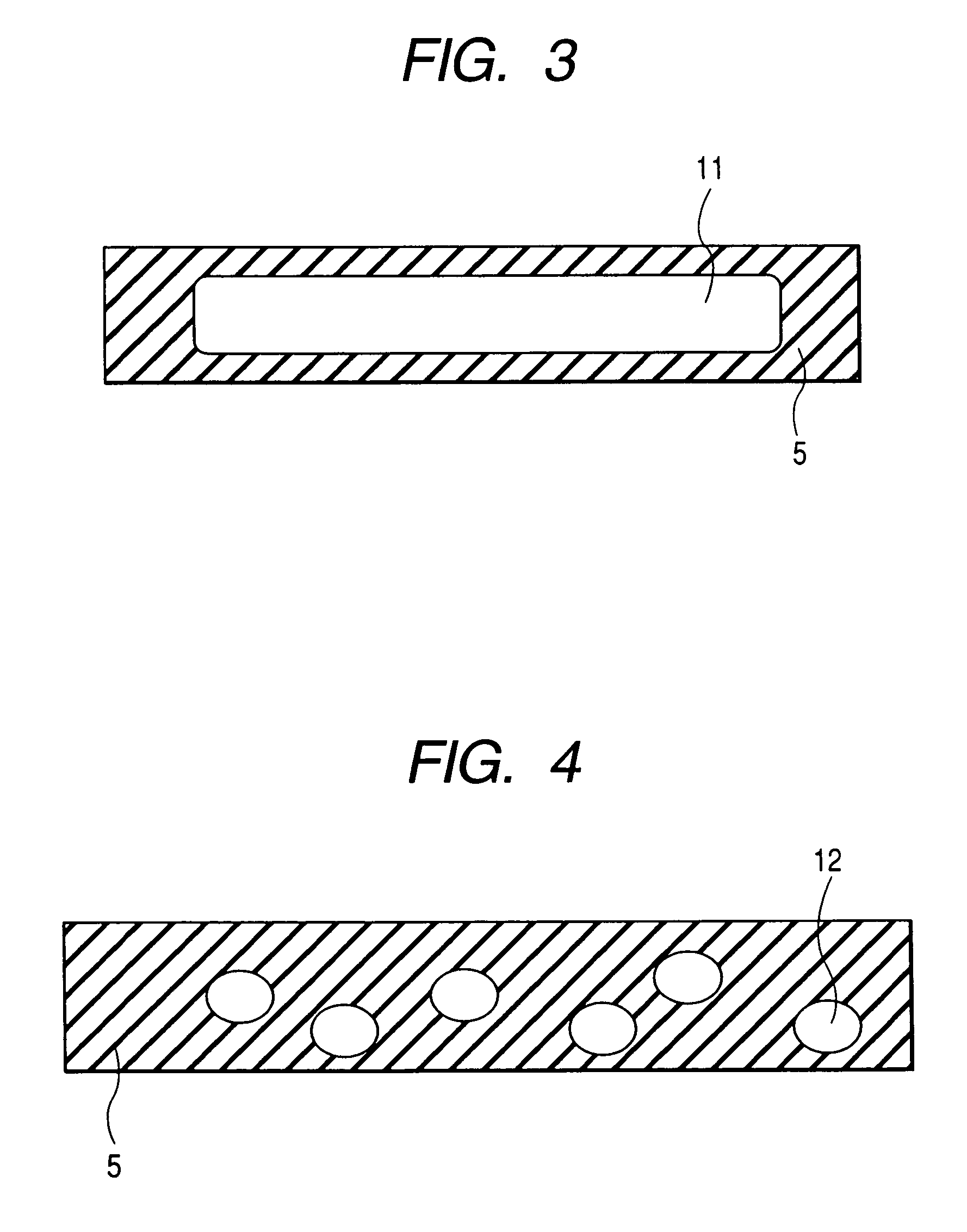Electro-acoustic transducer device
a transducer and electro-acoustic technology, applied in the field of transducers, can solve the problems of electro-acoustic conversion efficiency, electro-acoustic conversion efficiency, and the quantity of electrification undergoes a drift, and achieves the effects of preventing the deterioration of azimuth resolution of images, reducing the number of transducers, and reducing the cost of operation
- Summary
- Abstract
- Description
- Claims
- Application Information
AI Technical Summary
Benefits of technology
Problems solved by technology
Method used
Image
Examples
Embodiment Construction
[0028]Embodiments of the invention are described hereinafter with reference to the accompanying drawings.
[0029]FIG. 2 is a sectional view showing one embodiment of an electro-acoustic transducer device according to the invention, using silicon as a base material. The electro-acoustic transducer device comprises respective layers sequentially disposed in the following order from the bottom, including an n-type silicon (Si) substrate 1 doubling as a lower electrode 2, a first silicon compound layer, a void layer 4, a second silicon compound layer 5, an upper electrode 3 made of aluminum, and a first silicon compound layer 6. As for a thickness of each of the layers according to the present embodiment, the first silicon compound layer positioned under the void layer is 30 nm in thickness, the void layer is 100 nm in thickness, the second silicon compound layer is 200 nm in thickness, the upper electrode is 200 nm in thickness, and the first silicon compound layer positioned on top of t...
PUM
 Login to View More
Login to View More Abstract
Description
Claims
Application Information
 Login to View More
Login to View More - R&D
- Intellectual Property
- Life Sciences
- Materials
- Tech Scout
- Unparalleled Data Quality
- Higher Quality Content
- 60% Fewer Hallucinations
Browse by: Latest US Patents, China's latest patents, Technical Efficacy Thesaurus, Application Domain, Technology Topic, Popular Technical Reports.
© 2025 PatSnap. All rights reserved.Legal|Privacy policy|Modern Slavery Act Transparency Statement|Sitemap|About US| Contact US: help@patsnap.com



